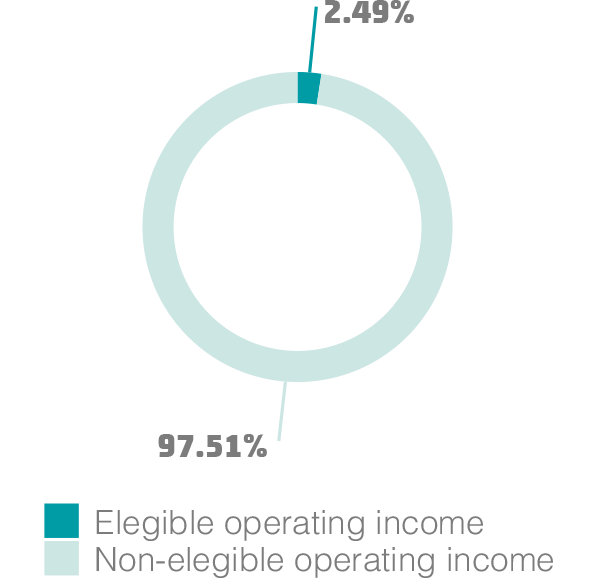The EU taxonomy is a classification system that establishes a list of environmentally sustainable economic activities aimed at fulfilling the EU's climate and energy targets for 2030 and advancing the objectives of the European Green Deal. It provides clear definitions of which economic activities are considered to be "environmentally sustainable".
For an economic activity to be identified as environmentally sustainable, it must contribute to the achievement of certain environmental objectives. The Taxonomy Regulation establishes six environmental objectives:
Regulation (EU) 2020/852 established a phased implementation of the regulation, starting with simpler regulatory requirements in 2022 and extending them from January 2023. From 1 January 2024, all disclosure obligations of the Taxonomy for Mitigation and Adaptation targets come into force, obliging reporting on the basis of Annexes I and II of the Article 8 Delegated Act.
To evaluate the environmental sustainability of the company, a study was conducted in 2022, confirmed and validated in 2023, to identify the main business units and the specific economic activities for each of the them. The result was the following list with the necessary details to achieve the definition of a specific NACE.
In the eligibility analysis, the activities have been classified according to the KPIs (Operating Income, CapEx and OpEx) as some activities only appear in some of the defined items
To qualify as environmentally sustainable, activities must satisfy these criteria concurrently.
To assess alignment, each activity underwent initial eligibility screening, followed by checks for compliance with the following criteria:
|
Telecom Infrastructure Services |
Broadcasting infrastructure |
Other network services |
|
TIS |
Broadcast |
IoT |
|
5G |
Internet Media |
Smart Services |
|
Engineering Services |
|
MCPN |
|
Fiber |
|
Connectivity |
|
Utility fee |
|
O&M |
|
LTE |
|
Other income |
|
Pass through |
|
|
|
Others TIS |
|
|
|
DAS BL |
|
|
|
Land Aggreg. |
|
|
|
Datacenters |
|
|
"The ESEF (“European Single Electronic Format”) labeling has meant greater homogeneity and transparency in the financial information issued. In the short term, it will continue to bring new challenges for Cellnex, also in relation to non-financial information. This highlights our ability to adapt to the changes that are yet to come."
Melodi Bermúdez
Global Finance Expert - Cellnex Corporate
Compared to 2022, notable advancements have been made, including enhanced identification of IoT activity and mission-critical functions, as well as improvements in IoT reporting. Moreover, new studies conducted in 2023 have been initiated to analyse compliance in CTS, DNSH, and Minimum Guarantees. Additionally, the adoption of the latest Taxonomy tables has been implemented in accordance with the new regulations, specifically The Supplementary Delegated Disclosure Act.
Cellnex has followed a conservative approach in reporting eligibility and alignment according to the Taxonomy, refraining from imposing definitions on activities that lack clear sustainability criteria. As a result, the level of eligibility remains low, mirroring that of the previous year. Of the total operating income, 2.49% is established as eligible based on the Taxonomy. 37.29% of this 2.49% is considered aligned - in other words, 0.93% of total operating income.
On the other hand, 2.78% of the CapEx is considered eligible. 8.17% of this 2.78% is considered aligned - in other words, 0.23% of total CapEx.
Cellnex aims to enhance the company's alignment with the TSC and DNSH principles of its eligible activities, and to maintain those classified as "aligned" during 2023. Additionally, efforts will be made to enhance methodologies and procedures to improve the applicability and usability of the EU Taxonomy.
The Annex 7 provides further details of the EU Taxonomy analysis performed by Cellnex.




Before starting...
We use our own and third-party cookies for analytical purposes and to show you personalized advertising based on a profile prepared from your browsing habits (for example, pages visited). Click HERE for more information. You can accept all cookies by pressing the "Accept" button or configure or reject their use by pressing the "Configure" button.
ACCEPT AND CONTINUE Configure cookies